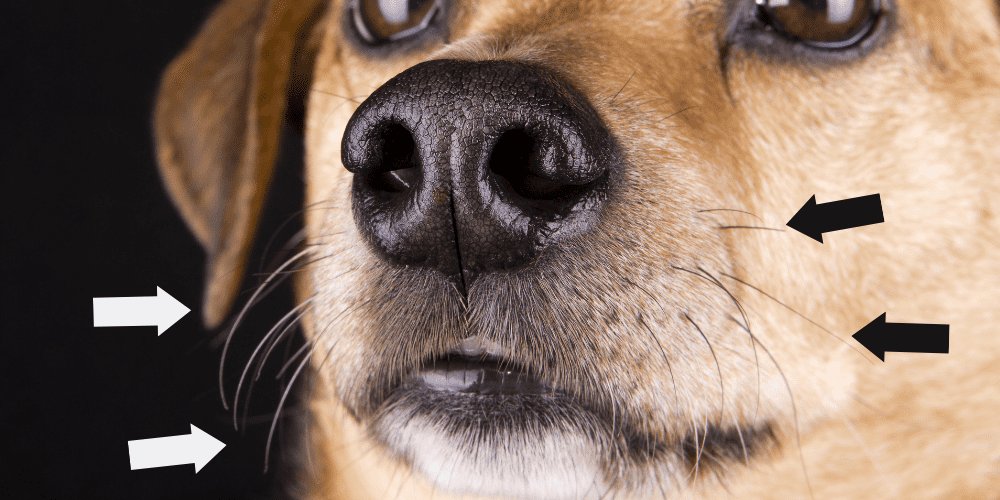One of the most loveable parts of a dog’s face is their whiskers, the long, swishy hairs that poke out around the ends of their snouts. But besides making them look cuter, what purpose could a dog’s whiskers have?
Dogs have whiskers to assist them in feeling their way through the world around them. Whiskers, or “vibrissae,” are stiff hairs that allow dogs to sense subtle shifts in movement in their surroundings. This may even include tiny movements like changes in the direction the wind is blowing.
In this article, we’ll explain exactly why dogs have whiskers beyond the basic answer we gave above, so keep reading now to learn everything you need to know.
What Happens When You Cut Off a Dog’s Whiskers?
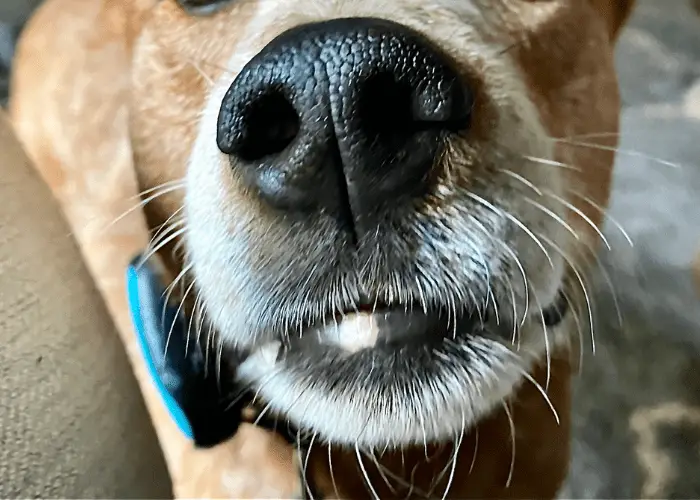
When a dog’s whiskers are cut off or otherwise removed, they will suffer a few negative effects. As such, it is generally advised not to mess with a dog’s whiskers unless they need to be cut or shortened for some reason.
The first and immediate adverse effect a dog will suffer should you remove their whiskers is a decrease in their ability to navigate their surroundings in low light.
Even when a dog cannot see, they will generally know where objects are because they can sense the air currents moving around it.
With such sensitive nerve endings in a dog’s whiskers, a dog may also suffer some discomfort or even pain if they are cut too short.
Vibrissae have clusters of nerves at the base of the hair, which allows a dog to sense such subtle motions around them. If the whiskers are cut down to these bundles of nerves, they could become irritated or inflamed.
Do Dog Whiskers Grow Back?
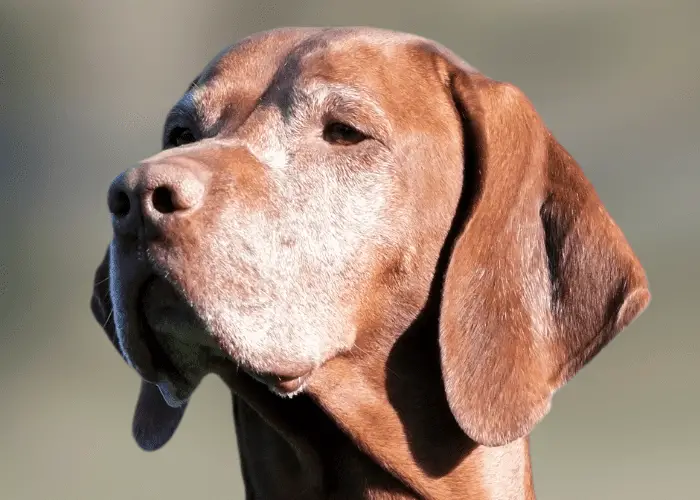
The good news is that a dog’s whiskers will grow back over time. Should your dog’s whiskers get cut for one reason, you can expect them to grow back to full length within 13 to 15 weeks. However, this period of regrowth may vary according to breed.
Many dog caretakers who trim whiskers think they probably grow back at the same rate that a dog’s fur grows.
Again, this will vary from breed to breed, as some breeds of dogs grow their fur quicker than others. The best practice is to leave your dog’s whiskers alone, so they won’t suffer the potential negative effects of shortened or cut whiskers.
Why Do Dogs Get Mad When You Touch Their Whiskers?
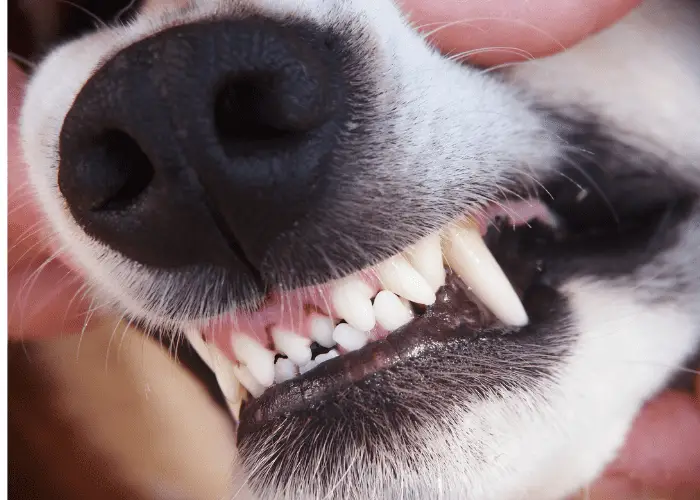
Dog whiskers or vibrissae are extremely sensitive to touch and grow in a way that allows the dog to sense tiny movements around them.
Specifically, a dog’s whiskers are embedded three times deeper in the skin than their normal hairs, and they are much stiffer and usually longer. The bundle of nerves and blood vessels at the base of each whisker makes these hairs so sensitive.
When you touch a dog’s whiskers, they may become agitated or even angry at you. Any overstimulation of these sensitive hairs will send many signals to the dig’s brain, and they may feel overstimulated themselves.
As these hairs are so sensitive, you may also be causing them pain if you handle their whiskers with too much force. It’s usually best to leave a dog’s whiskers alone unless you make sure to handle them with extreme care.
Other Uses for Dog Whiskers
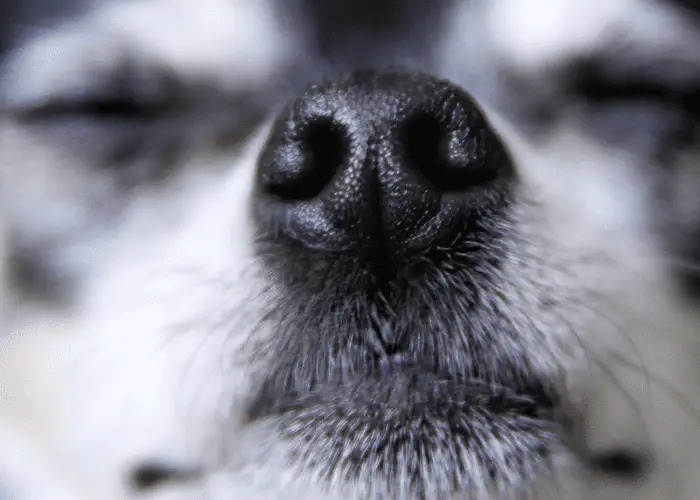
Besides sensing the environment around them, there are other vital uses for a dog’s whiskers. These include communication with other dogs, emotions, and basic messages.
Dogs will often convey emotions through their whiskers. When a dog is relaxed, its whiskers will lay flat against their faces. Happy or excited dogs will have their whiskers raised off their muzzles.
Whiskers can also disperse pheromones into the air around them, which helps them communicate specific things to other dogs who can understand these pheromones.
If a dog is scared or threatened by something, its whiskers will typically be angled toward whatever they perceive as a threat. This can also warn other dogs, showing the intruder that they are not welcome by the position of the dog’s whiskers.
Do Dogs Shed Their Whiskers?
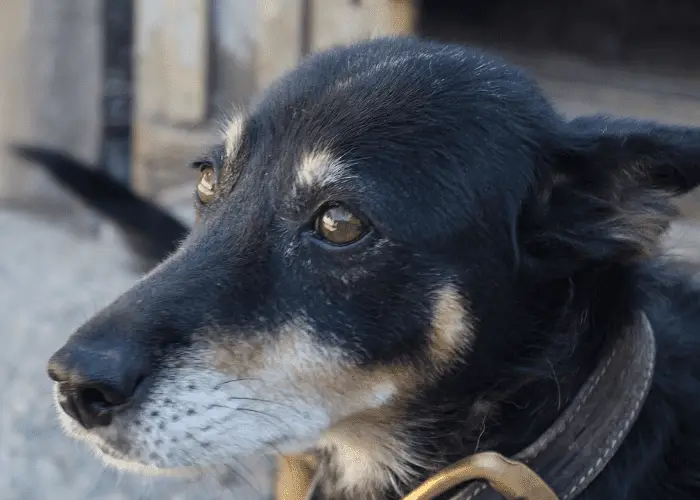
Despite the importance of whiskers for a dog’s sense of navigation, they do indeed fall out from time to time. Whiskers will typically be shed like any other hair on a dog’s body, and they may take a while to grow back. It could take up to a few weeks for these whiskers to grow back to their full length.
If you notice your dog has broken or brittle whiskers, this is usually an indication of old age or poor nutrition. Several other health conditions could impact the condition of a dog’s whiskers, including stress, hormones, infection, or mange.
There is also a condition that causes dogs to lose the hair on and around their faces, which can often include their whiskers. This condition is called alopecia areata, and while it usually only affects the facial areas, it can also cause a dog to lose hair all across their bodies.
Mild cases of this condition usually resolve on their own, but more severe cases might require medical attention or medications to resolve.
Final Thoughts
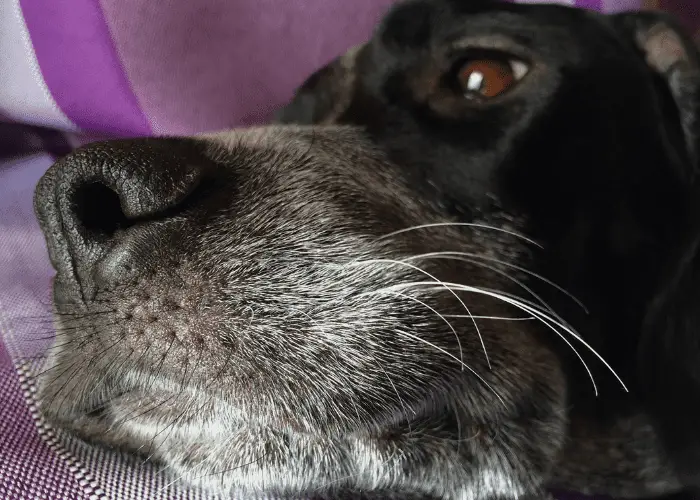
A dog’s whiskers are an essential structure on their faces that help them navigate the world. They can even help them know where obstacles are in low light or complete darkness simply by sensing the air around them.
This incredible sensitivity comes from the fact that these hairs are embedded deep in the skin in a bundle of nerves and blood vessels, making them extremely sensitive to touch.
In most cases, it’s best to leave a dog’s whiskers alone, as cutting them could cause difficulties in navigating their environment. For more exciting animal facts and information, check out our other articles!
RELATED ARTICLE: Why Do Dogs Have Jowls?

